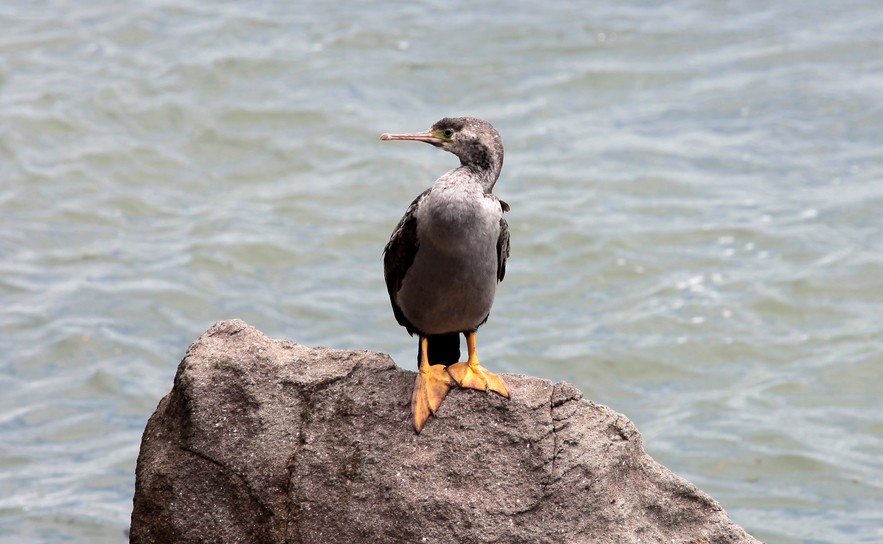PHALACROCORAX PUNCTATUS - (SPARRMANS, 1786)
Le Cormoran moucheté (Phalacrocorax punctatus) est une espèce d'oiseau de mer endémique de la Nouvelle-Zélande. Il est localement connu sous le nom de parekareka.
Description
Comparé aux cormorans typiques, le Cormoran moucheté est un oiseau au plumage clair. Son dos est marron. Son ventre est d'un bleu-gris pâle (apparaissant souvent blanc), et le blanc continue jusqu'aux côtés du bec et de la face, mais la gorge et le haut de la tête sont bleu-vert foncé. Durant la saison des amours, il est coiffé d'une double crête voyante. Il existe un léger dimorphisme sexuel.
Alimentation
Les cormorans mouchetés se nourrissent en mer, souvent en groupes importants, attrapant leurs proies en pleine eau plutôt qu'au fond. Les sardines et les anchois sont des proies très appréciées.
Nidification
Les cormorans mouchetés nichent en colonies de 10 à 700 couples, ces colonies se trouvent généralement sur les bords de falaises côtières ou sur des îlots rocheux. Dans l'Ile de Sud, ils sont particulièrement facilement observables autour de la Péninsule de Banks ; une importante colonie niche juste au sud de la ville de Christchurch. À Wellington Harbour, il y a une importante colonie sur un affleurement rocheux appelé "Rocher des Cormorans" ("Shag Rock") juste à l'extrême sud-ouest des îles Matiu/Somes.
-------------------------
The Spotted Shag or Parekareka, Phalacrocorax punctatus, is a species of cormorant endemic to New Zealand. Originally classified as Phalacrocorax punctatus, it is sufficiently different in appearance from typical members of that genus that to be for a time placed in a separate genus, Stictocarbo, along with another similar species, the Pitt Island Shag.
Description
Compared with typical cormorants, the Spotted Shag is a light-coloured bird. Its back is brown. Its belly is pale blue-grey (often appearing white), and the white continues up the sides of the neck and face, but the throat and the top of the head are dark blue-green. In the mating season, it has an obvious double crest. There is little sexual dimorphism. Spotted Shags feed at sea, often in substantial flocks, taking its prey from mid-water rather than the bottom. It is likely that pilchard and anchovy are important prey species. Spotted Shags nest in colonies of 10-700 pairs, these colonies are generally found on the ledges of coastal cliffs (see photo at right) or on rocky islets. In the South Island, they are particularly readily observed around Banks Peninsula; there is a large nesting colony immediately south of the city of Christchurch. In Wellington Harbour there is a large colony on a rocky outcrop known as "Shag Rock" just off the south-west end of Matiu/Somes Island. In the Hauraki Gulf there is a breeding colony on Tarahiki Island. The Spotted Shag was featured on a 60-cent New Zealand postage stamp first issued in 1988, in a series devoted to native birds.
